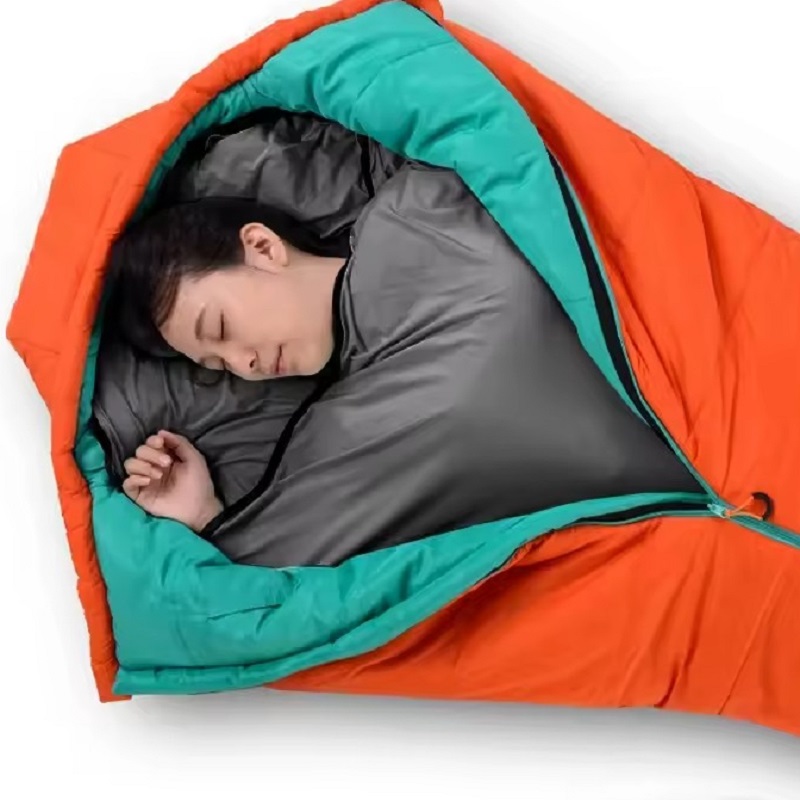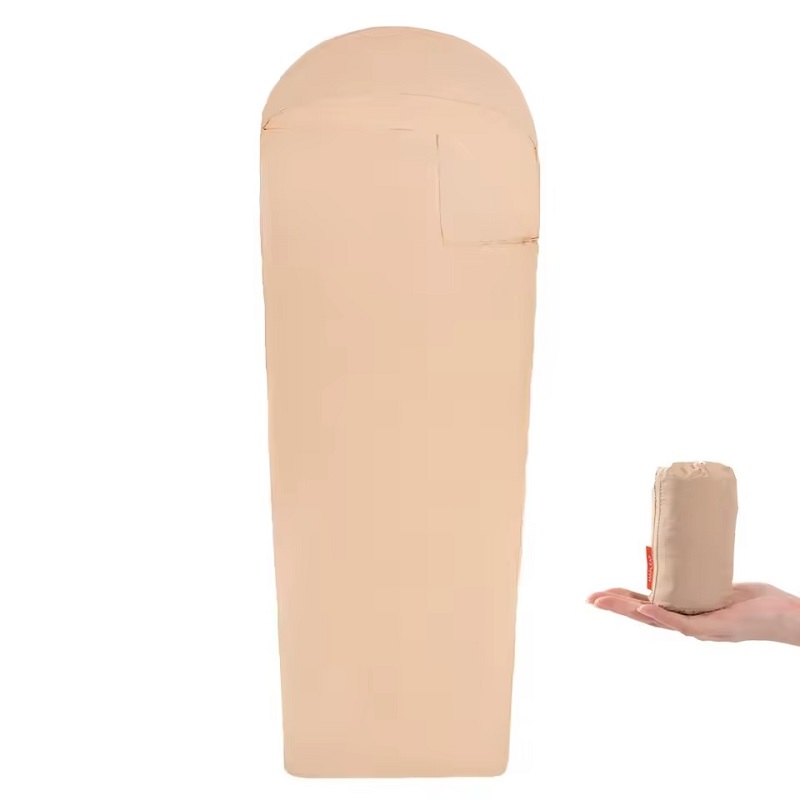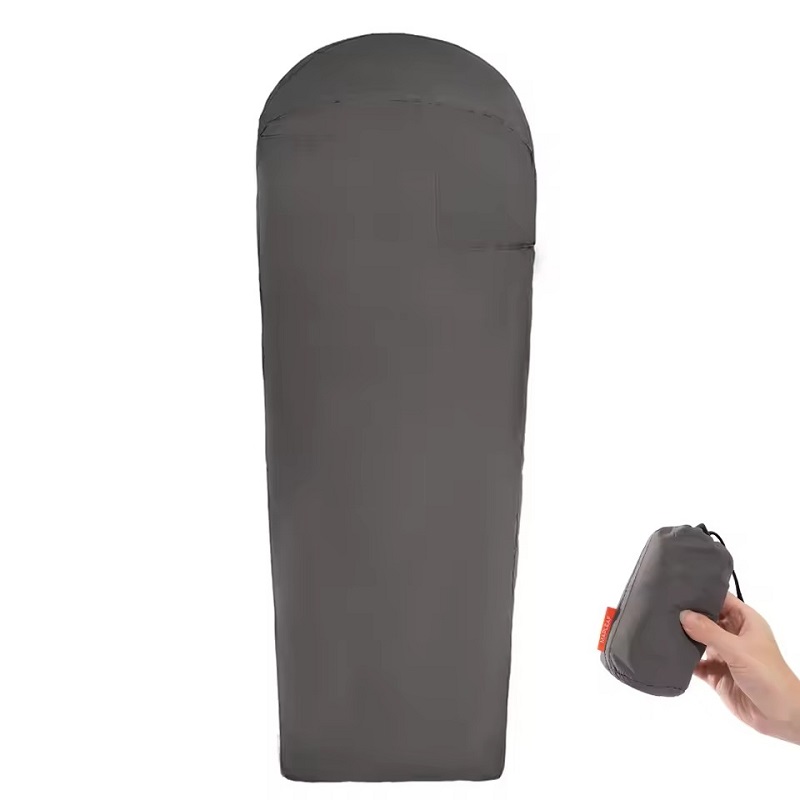Introduction
When planning a camping trip, having the right gear can significantly impact your experience. One essential item that often gets overlooked is a sleeping bag liner for camping. While many campers think a sleeping bag is sufficient, adding a liner can enhance your comfort, provide an extra layer of warmth, and protect your sleeping bag from dirt and moisture. Ultimately, investing in a quality sleeping bag liner can make your camping experience more enjoyable.
In this article, we will explore the various benefits of using a sleeping bag liner, discuss the different types available on the market, and provide guidelines for choosing the best liner for your specific camping needs. By the end of this guide, you will have all the information you need to enhance your outdoor adventures.
The Benefits of a Sleeping Bag Liner
There are several notable advantages to using a sleeping bag liner for camping. Firstly, a liner improves your comfort level during the night. Let’s take a closer look at the key benefits you can expect.
1. Added Warmth
One of the primary reasons campers opt for a sleeping bag liner is to gain extra warmth during chilly nights. A sleeping bag liner adds a layer of insulation that helps you conserve body heat.
- Temperature Regulation: During unexpected temperature drops, a liner can effectively trap warmth, allowing you to stay comfortable while you sleep.
- Versatility: On warmer evenings, you might find it more comfortable to use just the liner instead of a heavy sleeping bag, giving you the flexibility to adapt to various weather conditions.
2. Protection for Your Sleeping Bag
Another significant advantage of a sleeping bag liner is the added layer of protection it offers for your sleeping bag.
- Minimizes Wear and Tear: Over time, sleeping bags can accumulate dirt, sweat, and odors. A liner protects the sleeping bag from these elements, leading to greater longevity.
- Easier Cleaning: Most liners are machine washable, making maintenance straightforward. This means you can keep your sleeping bag fresh without needing to wash it as often.
3. Enhanced Comfort
In addition to warmth and protection, sleeping bag liners are designed to improve your overall sleeping comfort.
- Variety of Materials: Liners are available in several materials, including cotton, silk, and synthetic fabrics. Each material has unique qualities that contribute to your sleeping experience.
- Moisture-Wicking Properties: Some liners are designed to wick moisture away from your body, keeping you dry and comfortable throughout the night. This feature is especially beneficial for sweaty sleepers or humid environments.
4. Reduced Allergens
For many campers, allergic reactions can arise from exposure to dirt and dust.
- Barrier Against Allergens: Using a sleeping bag liner can serve as a barrier, preventing allergens from coming into direct contact with your skin and respiratory system.
- Hygiene Maintenance: Liners help keep your sleeping bag hygienic while providing a soothing layer against your skin, which is great for individuals with sensitivities.

Types of Sleeping Bag Liners
When it comes to selecting a sleeping bag liner for camping, you’ll find various options available. Understanding these types will help you make an informed choice.
1. Cotton Liners
Cotton sleeping bag liners are the most common choice, particularly for campers who prioritize comfort and breathability.
- Softness and Comfort: Cotton is known for its softness, providing a cozy sleeping experience. Thus, it’s an excellent choice for those who want a more traditional feel.
- Accessibility: Additionally, cotton liners are widely available and generally more affordable. However, they may not provide adequate warmth in cold weather.
2. Silk Liners
Silk liners are considered a luxury option that offers various benefits for campers, especially concerning weight and packability.
- Lightweight and Compact: Silk is incredibly lightweight and compresses well, making it easy to pack for your camping trips. This is particularly advantageous for backpackers aiming to conserve space.
- Temperature Regulation: Silk liners do an excellent job of maintaining temperature, keeping you warm on chilly nights and cool when it’s hot outside. Moreover, they dry quickly, which is beneficial in wet conditions.
3. Synthetic Liners
Synthetic liners, typically made from materials like nylon or polyester, provide a balance between durability and comfort.
- Moisture Management: Synthetic fabrics often feature moisture-wicking properties, effectively keeping you dry throughout the night.
- Durability: They tend to resist wear better than natural fibers, making synthetic liners ideal for rugged camping scenarios where durability is essential.
4. fleece liners
Fleece liners offer additional warmth, perfect for those camping in colder climates.
- Extra Insulation: These liners can be used as a standalone sleeping solution in milder conditions or as an added layer for extra warmth within a sleeping bag.
- Softness: Fleece also provides a soft, plush feel that many campers find appealing.

How to Choose the Right Liner for Camping
Choosing the right sleeping bag liner is essential for maximizing your camping comfort. Here are some factors to consider when searching for the perfect liner:
1. Material
The material of your liner will significantly affect its performance and comfort. When selecting a liner, consider the camping conditions you will face.
- Cotton for Comfort: If comfort is your top priority, cotton might be the best choice. However, consider its limitations for colder nights.
- Silk for Versatility: Silk offers a balance of comfort, warmth, and lightweight packing, making it suitable for various conditions.
- Synthetics for Durability: If your trips involve rough conditions, synthetic fabrics can provide the durability you need.
2. Size and Shape
Next, consider the size and shape of the liner. Most liners are rectangular, which matches traditional sleeping bags, while some may come in a mummy shape for a snugger fit.
- Fit Matters: Ensure the liner is compatible with your specific sleeping bag dimensions, so it doesn’t create extra bulk or discomfort.
- Length Consideration: For taller individuals, selecting a longer liner ensures adequate coverage throughout the night.
3. Weight
If you’re planning a backpacking trip, weight becomes a critical factor. Look for lightweight options that won’t significantly add to your overall pack weight.
- Lightweight Materials: Silk and high-quality synthetic liners tend to be the most lightweight options available.
- Travel-Friendly: A good rule of thumb is that lighter liners often offer easier packing solutions, making them more travel-friendly.
4. Packability
The ease of packing your sleeping bag liner is another consideration.
- Compression Options: Some liners come with a compression sack, making it easier to pack away when not in use.
- Space Efficiency: Liners that pack down small are ideal for minimalist backpackers who prioritize space efficiency.

Tips for Using a Sleeping Bag Liner
Once you’ve chosen the ideal sleeping bag liner for camping, consider these tips for maximizing its benefits:
1. Maintain Cleanliness
It’s vital to keep your liner clean and hygienic.
- Frequent Washing: Follow the manufacturer’s care instructions for washing your liner. Regular cleaning prevents odors and maintains freshness.
- Hygiene Practices: Additionally, if you use your liner directly against your skin without pajamas, be even more diligent about cleaning.
2. Layering Techniques
Consider layering your liner with your sleeping bag during colder nights.
- Extra Warmth: On particularly cold nights, the added layer can significantly improve warmth. This method allows you to achieve comfort without carrying bulky gear.
- User Flexibility: Conversely, you can use the liner alone on warmer nights, providing versatility in your sleeping arrangements.
3. Seasonal Use
When camping in warmer climates, opt to use only the liner.
- Temperature Management: This approach allows for better temperature management while providing essential protection from dirt and insects.
- Personal Comfort: Many campers find sleeping directly in a liner more comfortable than a traditional sleeping bag during warm weather.

Where to Buy Right Liners
Now that you understand the benefits and types of sleeping bag liners, you may wonder where to purchase one. Here are some options to consider:
1. Online Retailers
Several online platforms, like Aliexpress and Amazon, offer a wide variety of sleeping bag liners from different manufacturers.
- Product Variety: Shopping online allows you to browse multiple options and read customer reviews, helping you make an informed purchasing decision.
- Convenience: This is particularly useful for busy campers looking to have their gear delivered directly to their doorstep.
2. Outdoor and Camping Stores
Local outdoor or camping stores provide the advantage of seeing and feeling the products before buying.
- Expert Advice: Staff members can provide valuable insights regarding the best choices for your specific use cases and geographical considerations.
- Product Testing: Trying out liners in-store helps you assess materials and find the most comfortable option for your needs.
3. Second-Hand Options
If you’re working with a limited budget, consider searching for second-hand liners.
- Bargain Deals: Websites like eBay or thrift stores may offer quality products at reduced prices. It’s an excellent way to save money while camping.
- Condition Check: Make sure to thoroughly inspect the item for any wear, damage, or cleanliness issues before purchasing.

Conclusion
A sleeping bag liner for camping is more than just an accessory—it’s an essential component that can optimize your outdoor experience. By providing added warmth, durability, and comfort, a quality liner allows you to enjoy restful sleep and ensures that your sleeping bag stays fresh and protected.
When choosing a liner, consider the various options and their respective benefits, taking into account your camping preferences, needs, and budget. Ultimately, investing in a reliable sleeping bag liner will significantly enhance your camping experience, whether you’re an occasional camper or a frequent adventurer.
So, before your next outdoor excursion, don’t forget to add a sleeping bag liner to your gear list. With the right liner packed securely in your backpack, you can sleep soundly under the stars, making your camping adventures even more memorable.
